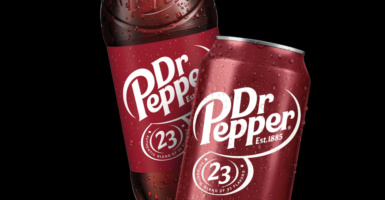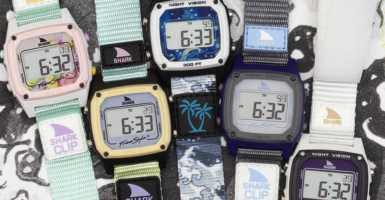American Kitchen Design Trends Over The Years – How Many Do You Remember?
What did your childhood kitchen look like? Did it have wooden cabinets and funky wallpaper? Or was it more traditional, with embroidered curtains and paisley? Some people could guess which decade you were born in based on your childhood kitchen. If you can’t discern the difference, check out how American kitchens have changed and evolved throughout the past century.
1910s: Free-Standing Furniture Everywhere

In the 1910s, kitchens did not have the built-in appliances or cupboards that we know today. Sinks were separate from the wall, often on four legs, to increase circulation and prevent mold. Cabinets became popular during this time, but they were all free-standing.
Linoleum prints were available in a wide variety of shapes and colors, from florals to diamonds to faux tiles. Ventilation and running water were beginning to improve, but it would take many Americans a while to update their kitchens.
1920s: Paint The Cabinets

In the 1920s, designers began adding a lot of color to their kitchens. They painted the cabinets, added floral drapes, and laid down vibrant linoleum and rugs.
Since most appliances were still free-standing, there was very little counter space. A bulky, multi-task cooking stove consumed most of the space. Built-in cabinets and sinks appeared in new kitchens, but for many Americans, those were still free-standing. Dishwashers were still not seen in the average person’s home.
1927: Introducing The Refrigerator

Although the refrigerator was invented in 1911, most Americans did not get one in their homes until 1927. Before then, they had an icebox, which was kept cold by large blocks of ice.
In the late 1920s, kitchens began to run on electrical devices. Toasters and waffle irons became cooking luxuries, which many people kept on their dining room tables. Sanitation was the goal of the decade, and many Americans switched to built-in sinks and gas ranges.
1930s: Taking A More Modern Shape

In the 1930s, kitchens began to become modernized, thanks in part to the German modern design school Bauhaus. Stoves and sinks were built into countertops, which were much longer than their 1920s counterparts. Some cabinets were built-in, but there was also a booming free-standing cabinet market.
Fewer and fewer households had servants, so owners spent more time in their kitchens. Designers focused on efficiency. Stoves were tucked under counters, ironing boards folded out of the wall, and sinks were placed close to stoves.
1935: Bring In Art Deco

When the Great Depression ended, Americans could once again focus on aesthetics. Art Deco, which initially came from the ’20s, returned with a modern twist. Checkerboard linoleum floors became all the rage, while colors grew richer.
Dark blues, reds, and golds appeared in many kitchens. Chrome furniture also became popular, especially tables and stools. Pendant lights and colorful knobs were not necessities, but some people installed them to make their kitchen look nicer and more modern.
1940s: The Self-Cleaning Kitchen Of Tomorrow

In 1939, House Beautiful teamed up with Procter & Gamble to create a “self-cleaning kitchen,” also called “the kitchen of tomorrow.” This kitchen was designed for easier cleaning. Mainly, the kitchens had wider floors so that people could vacuum them.
Stainless steel sinks and continuous countertops were designed to appear streamlined and be easier to sanitize. Although many still had their old layouts, future kitchens were no longer shoved into a corner–they were laid out for convenience.
1943: The Folkloric Kitchen

Furniture in the 1940s still had an old-school, folkloric feel to it. Kitchens were the same way. Many people displayed vintage dishes on open shelves, hung pinch pleated or embroidered curtains, or placed plants around their windows.
Some cabinets and china hutches had painted paisley designs, and some even had them stained on glass. Couches and benches were often striped or plaid, and some were built into the wall to create a dining area.
1947: The “New Kitchen”

In 1947, designers advertised a “new kitchen” which included many conveniences. Many kitchens included stools for people to sit while cooking or using the sink. A small table was inserted for prep work. Some had “mixing corners,” or a space on the corners of cabinets for mixing and baking.
Retro colors returned in the late 1940s. Pastel green, red, gold, and pink lined the countertops and cabinets. Linoleum floors came in a variety of funky patterns and colors.
1950s: Advertising To The American Housewife

In the 1950s, many women transitioned from working during the war to becoming housewives. Advertisements were geared toward making the woman and family’s life easier. Furniture became smaller and often had multiple uses.
This is where the stereotypical retro kitchen came in: pastel colors, “cabinettes” that hung on the walls, candy-colored stoves, and refrigerators. Speaking of the refrigerator, it was upgraded in the ’50s, with glass shelves and crisper compartments. Ovens, sinks, and stovetops were all built into the counters and walls.
1955: Kitchens With Dining Spaces

As mid-century furniture became smaller and more functional, dining rooms merged into kitchens. Many Americans were living in smaller homes and apartments, so they placed tiny dining tables around or in their kitchen.
Others saved even more space through bars. In I Love Lucy, Lucy and Ricky Ricardo ate at their countertop every morning. This wasn’t the only show that mainly took place in a kitchen; much of American home life centered around the kitchen, and advertisers took note.
1957: Kitchen Appliances Reached Luxury Status

As more and more designers created kitchen designs and appliances, they competed for business. Magazines advertised the newest designs, which were often more expensive. The kitchen was no longer just a workplace; it was a mark of status.
Steel cabinets were “in” during this decade, only to disappear in the 1960s. Devices like the green bean slicer and cake breaker were not only used for niche tasks, but were also showed off to friends and family. Many ’50s appliances are no longer common today.
1960s: Groovy And Gold

When the 1960s rolled around, bright and pastel colors faded into earth tones. Avocado green and gold became common kitchen colors. Homeowners no longer felt the need to paint over all of their wood.
In the ’50s, designers delighted in a wide variety of furniture materials, from acrylic to steel. But the ’60s abandoned the sparkle and shimmer. Kitchens relied more on natural lighting, and many had larger floor plans and longer counter spaces.
1961: The Return Of Wood

Although wooden furniture remained popular in the early 1950s, it didn’t return to kitchens until the ’60s. Kitchen cabinets and stools often retained a dark wood. Appliances even began switching from chrome and stainless steel to wood.
The pegboard was another kitchen accessory that became popular during the 1960s. You don’t see too many of those in kitchens nowadays.
1966: Bold, Funky Wall Art

Although wallpaper occasionally appeared in kitchens throughout the 20th century, its popularity skyrocketed in the ’60s. As in the ’50s, geometric designs were “in,” but so were florals, paisley, rainbows, and leaves.
Newer kitchens were designed in a U-shape, which not only provided more cabinet space but also allowed for a wide variety of wall decorations. Built-in fans and refrigerators became commonplace during this decade, which provided more floor space and flexibility in working throughout the kitchen.
1967: Microwaves And Dishwashers

In the mid-20th century, microwaves were mainly used for businesses and wealthier Americans. But in 1967, the first microwave company, Raytheon, pushed products that were designed for the average household. Microwaves were no longer a luxury item; they were almost as common as toothpaste.
In the late 1960s, dishwashers also began to appear in American kitchens. They would become common throughout North America in the 1970s. Designers began building dishwashers into counters, raising the value of ’70s homes.
1969: Solid-Colored Laminate

A telltale sign of late ’60s and early ’70s design is solid-colored laminate. Unlike the marble, tile, and granule counters that we see today, 1960s kitchens included bold color wherever possible.
While the upper or lower cabinets were wood, the laminate counters were green, yellow, blue, grey, or white. Some kitchens even combined wood paneling with bricks that were pained in the same color. Instead of simple walls and funky counters, ’60s kitchens had simple counters and funky walls.
1970s: Unique, Dizzying Designs

In the 1970s, homeowners no longer wanted streamlined kitchens. they wanted kitchens to reflect their homes and their personalities. While wallpapers rose in popularity during the ’60s, the industry exploded in the ’70s.
Wallpaper came in paisley, plaid, stripes, floral, geometric shapes, and more. Backsplashes also became commonplace, many of which included tiles with different colors and designs. Wood cabinets and solid countertops remained, although many people painted their cabinets, too. Every kitchen looked different in the 1970s.
1975: Open, Country-Style Kitchens

As kitchens became larger and more open, designers started incorporating elements that were originally only seen in other rooms. For instance, plants transitioned from the living room to the kitchen. Open shelving used baskets, bowls, and greenery as decor.
Since kitchen islands were now more common, homeowners turned the ceiling above the island into storage. Pots, pans, and other cooking utensils hung from the ceiling. Hanging fruit baskets and mounted spice racks also adorned the walls. The displayed cooking utensils offered a countryside vibe.
1977: A Glowing Color Palettte

Formica, a type of laminated composite, was the most popular material of the ’70s. This came in a wide variety of colors, and near the end of the decade, neon and electric colors appeared in magazines.
Picture all the colors of a retro disco: acid yellow, fire orange, grape, raspberry, and forest green. Kitchen tables, appliances, and even glassware came in these colors. But these bold prints did not last long.
1980s: Returning To Industrial

Kitchens from the 1980s were more industrial than the ’50s and ’60s. Since more women worked full time, the kitchen stopped becoming a family hub and returned to a workspace. As a result, the room became more industrial, like we see today.
The living room and kitchen became separate again, but some kitchens had built-in benches and bars to conserve space. Homeowners cared more about functionality than they did about decor, wallpaper, or fancy colors.
1981: Pantries And Massive Kitchen Islands

The 1980s saw the return of the pantries. From the ’50s through the ’70s, pantries disappeared in favor of built-in cabinets. But as kitchens shrank, pantries returned to prove much-needed storage.
Instead of cabinets, designers focused on massive kitchen islands. Some of these islands included sinks, trash compartments, and even stoves. The island offered several uses from seating to cooking space. No longer did people focus on funky colors and designs; functionality took precedence, even in large kitchens.
1982: Tiles And Terra Cotta

By the end of the ’70s, solid laminate disappeared from many kitchens. Tile counters and backsplashes became all the rage, although mirrored backsplashes were popular for a while, too. Floors were also tiled or checkered to imitate the look.
Many ’80s kitchens reverted back to earth tones. Terra cotta floors, medium-hued woods, and grey and blue cushions made the kitchen appear calmer. The style of ’80s kitchens would evolve a few times throughout the decade.
1985: Black, White, And Pastels

By the middle of the decade, homeowners tore down patterned wallpaper. Although patterned tiles were still common, a new contemporary design style simplified the kitchen to blacks, whites, and pastels. White cabinets with black ovens and microwaves popped up during this period.
Pastels decorated furniture in solid chunks which, when contrasted with white and black, made a bold statement. Cabinets now came in laminate as well as countertops. Although small kitchens were desirable, residents did not want to clutter them with excessive decor and patterns.
1990s: Granite Countertops And Pale Cabinets Without Handles

If you’re wondering why your kitchen has granite countertops, thank the ’90s. Granite became popular during this period. Blue, black, grey, green, and white countertops became the norm instead of pastels. Kitchen islands also had granite tops, many of which imitated marble.
Unlike the medium-hued woods of the ’50s and ’70s, the 1990s introduced lighter woods. Pale wooden cabinets often had no handles to create a streamlined appearance. White cabinets also came from the ’90s, but these became more popular in the following decades.
1991: All-White Appliances

Although white appliances were being sold in the ’80s, they became especially desirable in the ’90s. Ovens, refrigerators, stoves, and whites turned white. Some all-white kitchens, which included tiles and cabinets, also appeared in magazines.
Most people were happy with wooden cabinets with plain, white countertops and walls. Kitchens from the ’90s rarely had wallpaper or open shelving. Gone were the complex kitchens of the ’70s or eye-catching appliances of the ’80s; neutral was “in.”
1994: The Farmhouse Style

The 1990s saw a spike in the farmhouse style. This style imitated English and French countryside houses and worked well with the popular light wood cabinets. Brass and copper cooking utensils popped up in decor stores, along with glass china hutches, apron sinks, and cast iron.
Kitchens often had neutral earth tones such as beige and olive green. Backsplashes and floors were still covered in tile, but these were usually white or another pale color.
2000s: McMansions And Open Kitchens

The 2000s were known for “McMansions,” massive homes with bigger rooms than seen in previous decades. Kitchens also expanded. Counters wrapped around the entire room, kitchen islands became the size of a dining table, and walk-in pantries popped up everywhere.
Cabinets remained in neutral colors such as white, beige, and dark wood. The farmhouse style evolved into “Tuscan” kitchens, which had elegant designs such as ornate wood and a rustic backsplash. But most kept their kitchens simple and open.
2006: Stainless Steel And Granite

If your kitchen has granite countertops and stainless steel appliances, it’s probably from the 2000s. Stainless steel became universal during this decade. Refrigerators, ovens, stoves, toasters, and microwaves came in stainless steel, likely because it is durable and easy to clean.
Granite was the go-to material for countertops and even backsplashes. Mica, which created dotted patterns in granite, made each kitchen unique. Handles returned to cabinets, and some designers especially favored long, horizontal handles instead of knobs.
2010s: White Cabinets And Quartz Countertops

If the 2000s favored neutrals, then the 2010s loved whites. During this era, white cabinets frequently appeared on home decor Instagram accounts. Many appliances, such as the refrigerator, swapped from stainless steel to white.
Quartz countertops also came into style. Although quartz looks more expensive than granite, they are often the same price (and quartz is sometimes cheaper). This completed the white-on-white trend of the 2010s. If there was color, it was often cool and airy, such as grey and icy blue.
2020s: Accent Walls And Metallic Statement Pieces

After decades without wallpaper, the late 2010s finally returned to it–in moderation. Accent walls became popular near the end of the decade and have continued into the 2020s. A single wall would have wallpaper or a different colored paint, often behind the kitchen table.
Metallic statement pieces would add a pop of color to all-white kitchens. Many made their sinks and hardware brass or black. Pendant lights and chandeliers hung over kitchen tables or islands, also in gold or black.




